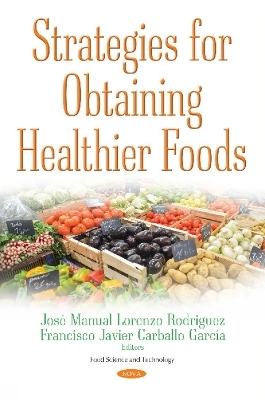
Strategies for Obtaining Healthier Foods
Seiten
2017
Nova Science Publishers Inc (Verlag)
978-1-5361-2159-9 (ISBN)
Nova Science Publishers Inc (Verlag)
978-1-5361-2159-9 (ISBN)
Consumers are increasingly demanding, looking for different food products, new, more shocking and surprising, and providing more pleasurable feelings. At the same time, consumers are becoming more informed and aware about food and health issues, demanding increasingly safe and healthy products. In such a scenario, the current food industry must maximize efforts to combine innovation, the ability to surprise, quality and safety. On the other hand, it is clear that there is no total overlap between the healthy aspects of food and the perception of this healthiness by consumers. In this sense, consumer information, education and awareness have to be important work areas in the future. This book aims to cover the modern strategies adopted by the food industry to obtain healthier foods without giving up the highest quality standards. The first two chapters are devoted to the novel systems of food hygienization; that is to say, the non-thermal technologies and phage therapy. The next two chapters cover the use of microbial cultures as bioprotective agents or with probiotic purposes in the food industry. Then, three chapters deal with the use of natural substances as preservatives, antioxidants, colorants, emulsifiers, sweeteners, anticaking agents, tenderizers, stabilizers, thickeners and gelling agents. The strategies for reducing some suspicious ingredients, or ingredients that arouse more misgivings in consumers (e.g. salt, fat, etc.), and minimally modifying the sensorial characteristics and consumer acceptability of the foods are also treated in several chapters. The use of microencapsulation, a promising technology for adding additives and ingredients to foods as well as the development of new healthy products are also described. Finally, the benefits and risks of consuming genetically modified food for the population and the technical aspects for producers are detailed in the last chapter. All of the contributors are active researchers, and they maintain excellent international reputations and great expertise in their respective areas. Overall, this book will be useful for graduates studying food science and technology, and for researchers, scientists, policy-makers and professionals from the food industries.
Preface; Microbial Inactivation by Non-Thermal Technologies for Food Preservation; Phage Therapy in Food Hygiene; The Use of Bioprotective Cultures; The Use of Probiotics in the Food Industry; Antibacterial Substances as Biopreservatives in Foods; The Use of Natural Antioxidants to Replace Chemical Antioxidants in Foods; Natural Substances as Substitutes for Chemical Additives; Salt Reduction Strategies in Meat Products Made from Whole Pieces; Strategies to Reduce the Salt Content in Fermented Meat Products; Strategies for Fat Reduction & Improvement of Emulsified Meat Products; The Use of Microencapsulation by Spray-Drying & Its Application in Meat Products; Transgenic (Genetically Modified) Foods: Risks & Opportunities; Index.
| Erscheinungsdatum | 13.09.2017 |
|---|---|
| Verlagsort | New York |
| Sprache | englisch |
| Maße | 180 x 260 mm |
| Gewicht | 852 g |
| Themenwelt | Studium ► Querschnittsbereiche ► Prävention / Gesundheitsförderung |
| Technik ► Lebensmitteltechnologie | |
| ISBN-10 | 1-5361-2159-2 / 1536121592 |
| ISBN-13 | 978-1-5361-2159-9 / 9781536121599 |
| Zustand | Neuware |
| Haben Sie eine Frage zum Produkt? |
Mehr entdecken
aus dem Bereich
aus dem Bereich
das Manual zur psychologischen Gesundheitsförderung
Buch | Hardcover (2023)
Springer Berlin (Verlag)
39,99 €
Lehrbuch zur berufsspezifischen Ausbildung
Buch | Softcover (2021)
Kohlhammer (Verlag)
46,00 €
Wissenschaftlich basierte Empfehlungen, Tipps und Ernährungspläne für …
Buch (2022)
Thieme (Verlag)
51,00 €


